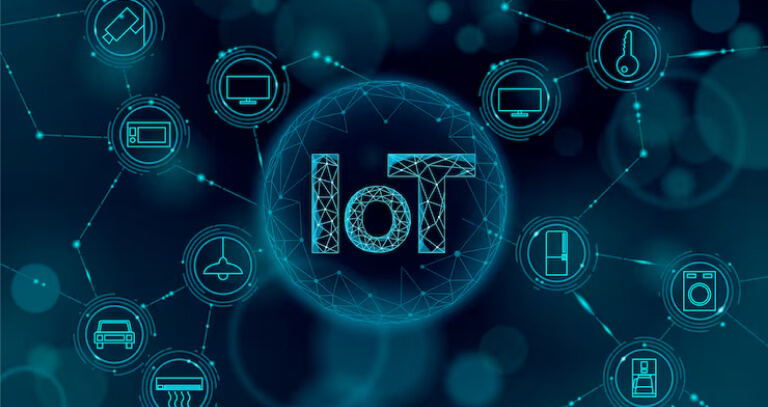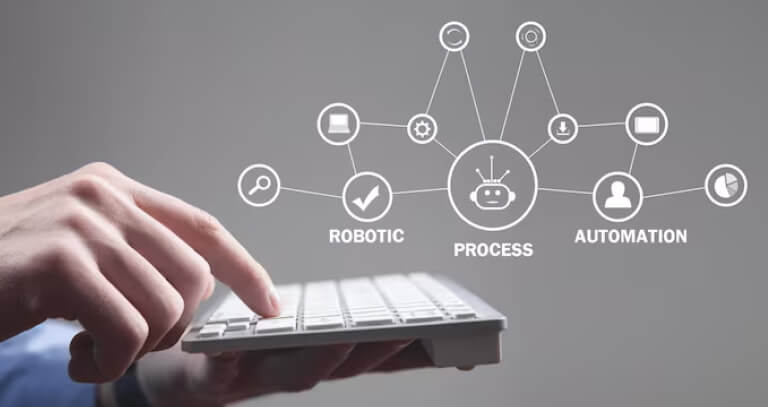Ultimate Guide to Transportation Management Software
Ditstek Blogs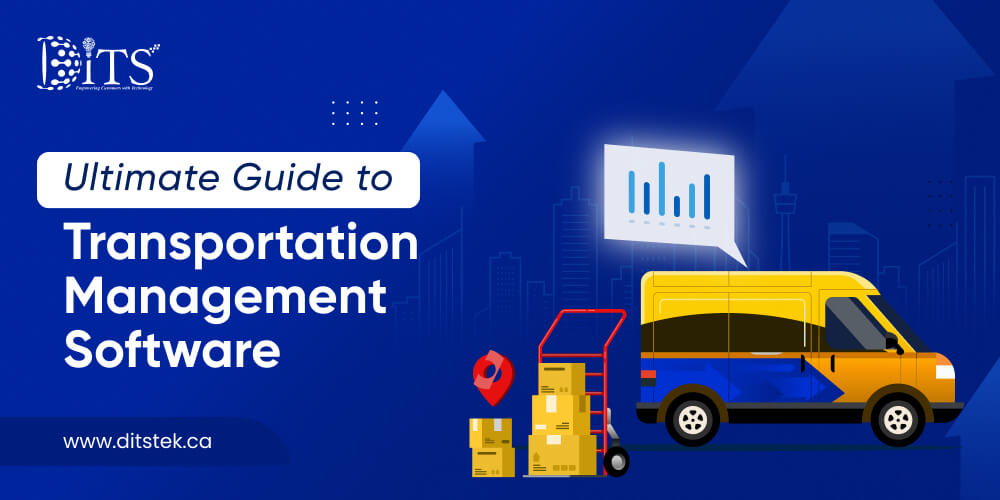
The e-commerce industry has completely changed the way shipping services operate. Customers have become accustomed to fast shipments, superior tracking, and low-cost shipping options. The "I want it now" mentality has placed significant pressure on every organization that offers shipping services to deliver faster.
Are all companies offering shipping services simply riding a wave of chaos? No, they have a transport management system that handles everything.
A transportation management system (TMS) can significantly enhance a company's logistics strategy by helping it streamline shipping activities and utilize its resources more efficiently. TMS is a system equipped with transportation management software that enables businesses to manage the complexities of modern transportation management with greater efficiency and control.
In this blog, we will discuss why a TMS is such a valuable tool, what features make a TMS work effectively, and the step-by-step process for developing one that meets business needs.
Need for Transport Management System
The statistics speak for themselves. According to Grand View Research, the global Transportation Management System (TMS) market is estimated to reach USD 41.57 billion by 2030, growing at a CAGR of 17.5% from 2025 to 2030.
Such rapid growth suggests that companies need a technology to help them reduce shipping expenses, improve logistics, and enhance customer experience. Transportation management software provides them with actionable data required to make strategic decisions for success in modern logistics.
A strong TMS system creates transparency around every movement, enabling decision-makers to identify and address issues before they create issues. For many companies, this means fewer penalty charges, maximizing their fuel consumption, and fostering stronger relationships with partners.
However, the best part is that it is not only about reducing costs; a reputable management platform also provides a secure reputation. In the present era of ecommerce, where customers track shipments as often as they check their emails, transparency plays a vital role in building trust. Companies that can offer real-time status updates become more relevant than those relying on manual processes and paper.
Ready to Optimize Your Logistics Strategy?
Discover how transportation management software can reduce costs, improve visibility, and scale operations with confidence.
Common Challenges Businesses Face Without TMS
Working without the right tools feels like dealing with fire drills every day. Teams are juggling spreadsheets, taking phone calls, and documents that are all over the place, only to find out 'something fell through the cracks'. The result: missed deadlines, lost revenue, and frustration.
Manual processes slow everything down; shipments get delayed because updates don't happen quickly enough, drivers take unnecessary mileage, and fuel costs increase, which means leaders have to rethink why the budget doesn't match reality.
Another significant challenge is visibility; if the system is disconnected, it is very difficult to determine the location of goods at any given moment. For example, suppose the goods are delayed an hour, and you need to notify a customer. In that case, the lack of details to share will contribute to a sense of incompetence in a professional environment.
Scaling becomes a new issue; as order volumes increase, errors will also likely increase. A small fleet might be able to manage errors, but the risk of things falling apart increases as the business grows. Everything your team did to keep everything together now is a bottleneck as your quantities grow.
Even compliance can be a hurdle; with regulations changing frequently, a lack of tools can result in fines or delays that could often be avoided. No one wants a legal issue on top of an operational mess!
Business Benefits of Implementing a TMS
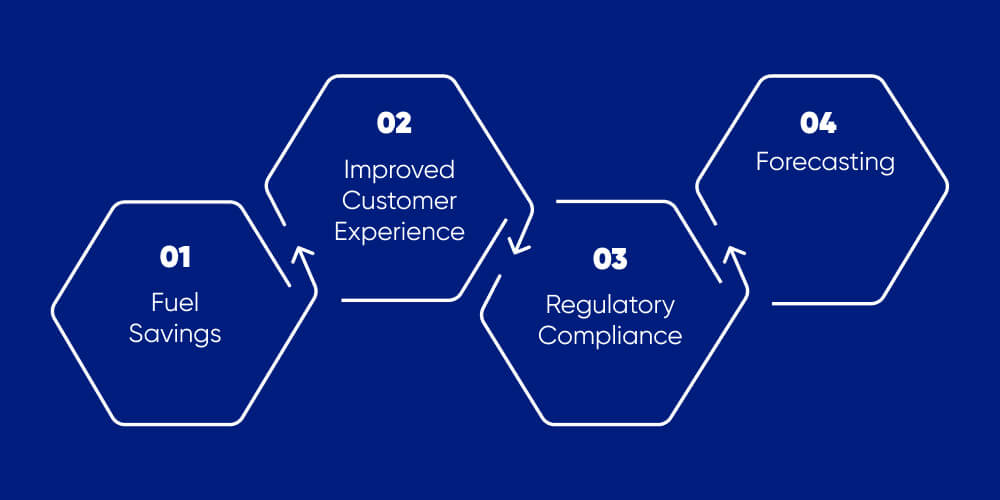
Implementing a modern TMS program goes beyond simply keeping the trucks moving. Using TMS software for trucking company operations translates hours of planning into minutes, freeing your team to concentrate on tactical options.
Fuel Savings
The first benefit comes from cost management. Choosing shorter and clearer routes saves a lot of fuel, while scheduled verification ensures that any errors associated with billing don’t quietly affect margins. Over time, these savings compound to yield a healthy bottom line.
Improved Customer Experience
Next, there's the customer experience. Faster deliveries, notifications that matter, and fewer delays collectively provide a service experience that customers will recognize and appreciate. In saturated industries, this service experience often leads to repeat contracts.
Regulatory Compliance
Another underappreciated benefit is compliance. It covers ensuring weight restrictions, weekly hours of service, and following local transport rules; a quality TMS ensures fines and service interruptions don't catch organizations off guard. These operational procedures have always been in place, but have become an integral part of the workflow.
Forecasting
And finally, that data drives forecasting. Rather than guessing where the subsequent slowdown might occur, organizations can now point to real-time trends and numbers. That clarity drives long-term growth and helps companies scale operations easily.
Can You Afford Shipping Errors in 2025?
Transportation management software minimizes delays, billing errors, and penalties while building trust with customers and partners.
Step-by-Step Guide to Building Transport Management Software
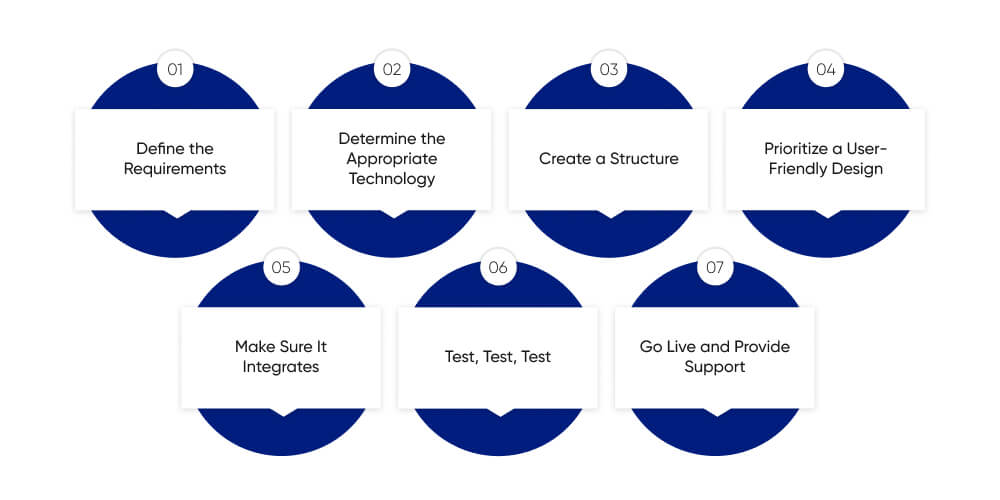
Building a transportation management system (TMS) is more than just writing software code. It involves planning, innovative design, and sound data testing to ensure the solution meets business requirements. Here are the proper steps to build a TMS software solution.
Step 1: Define the Requirements
The first step in the process is to determine the software's purpose. For example, meeting with those who will be using the software, such as fleet managers, dispatchers, and drivers. You will need to understand their primary pain point and identify solutions that can help address it. This step ensures the system is designed around real-world requirements.
Step 2: Determine the Appropriate Technology
Next, we need to select the appropriate technologies, such as databases, programming languages, and frameworks. The decision point will be based on whether you want the system to leverage real-time updates, whether you expect the company to grow and require automatic scalability, and whether you need to integrate other solutions. The right choice of technologies ensures both performance and flexibility in the software.
Step 3: Create a Structure
At this point, consider the following: drawing the map before building the city. The structure will outline how all the systems will come together and how data will traverse across the systems. A proper structure will result in the reliability of the platform and the flexibility to scale in the future.
Step 4: Prioritize a User-Friendly Design
Your TMS should not feel like a chore employees have to deal with. Its design should be user-friendly and work properly for both office workers and drivers on the road. Having a clean, simple design will help people complete their tasks quickly and with less frustration, whether they are using a desktop computer or a mobile device.
Step 5: Make Sure It Integrates
There isn't a transportation business that runs entirely on a single system. Your TMS should integrate with other systems, such as ERP or CRM systems. Developers use APIs to ensure that all systems integrate seamlessly, allowing information to flow smoothly between different tools and user systems. IoT integration is the technology the development team can use to integrate vehicles and existing systems with IoT devices and sensors.
Step 6: Test, Test, Test
Before going live with your new system, thoroughly test every element of your software. You need to thoroughly check every single function, fix any problems, and gather feedback from actual users. Careful testing can save you from regret over a poorly implemented system and help verify the system with users, thereby mitigating or significantly reducing the issues involved.
Step 7: Go Live and Provide Support
Once you have completed testing, your system is ready to go live. However, that is not enough. Your users require training on how to use the TMS, as well as potential ongoing support, to ensure that problems can be addressed efficiently. Additionally, ongoing dedicated updates will ensure that your TMS remains up to date as your business evolves and changes over time.
Cost of Transport Management Software Development
Several factors determine the cost of developing a transport management software solution. The type of solution, its features and functionalities, the complexity of these features, the platforms that need to be covered, and the location of the development team all contribute to the overall cost. Considering these factors, the average TMS development cost ranges between $25,000 and $150,000.
It is always best to outsource development to a professional software development team, such as DITS, which offers high-quality development services at reasonable prices. The location of the development team also plays a significant role in the cost and quality of software. Here are the average hourly rates for software developers in popular locations:
| Location | Hourly Rate of Developers |
| North America | $100 - $200 |
| South America | $30 - $70 |
| Western Europe | $75 - $150 |
| Central and Eastern Europe | $100 - $200 |
| Asia | $100 - $200 |
| Australia | $100 - $200 |
Looking to Cut Logistics Costs This Year?
Shorter routes, real-time tracking, and automated workflows help companies unlock significant fuel and operational savings.
Future of Transportation Management Software for Businesses
The logistics and transportation industry is evolving continuously. Markets are getting faster, customer expectations are rising, and disruptions are less predictable. As a result, the next wave of platforms is shifting from reactive to proactive.
Artificial intelligence is playing a key role here. At DITS, we leverage AI software development not only to deploy solutions but also to integrate predictive analytics, automated decision-making, and quality assurance into the workflow.
IoT integration is another technology we use to integrate your vehicles with IoT devices and sensors. Sometimes, leaders don’t have visibility into the current health of their vehicles, fuel consumption, or cargo conditions. However, with connected sensors, companies can track vehicle health, fuel consumption, and cargo conditions in real-time.
Let us also consider the role of communication. In transportation, AI Chatbots are creating seamless communication between dispatchers, drivers, and clients without the need for manual updates. Drivers, managers, and other employees in transportation companies can ask queries
Sustainability is also impacting the future. Increasingly, clients are requesting that businesses adopt sustainable practices, and more companies are implementing current systems that measure emissions, optimize load capacities, and minimize empty miles. Companies that adopt sustainability practices will not only reduce costs but also build trust in markets that value eco-consciousness.
Why choose DITS for transportation management software development
Choosing the appropriate partner is just as critical as selecting the right system. At DITS, we create solutions that are strategically aligned with a company's business strategy and growth plans. Our unique approach incorporates industry knowledge with modern technology, so systems are not only helpful but also built to be in a "ready state" for the future.
One of our primary focuses is customization tailored to the specific requirements of our clients. We build solutions that meet your particular goals, such as enhanced visibility across the fleet, advanced reporting, or compliance features. That flexibility adds the ability to avoid paying for features you don't want, while focusing on your true ROI.
We use AI tools for reliable software development, quality checks, predictive analytics, and real-time dashboards. It's our assurance that every platform will not only meet today's needs, but also be easily adaptable to future requirements.
We have over a decade of experience in developing solutions for various industries, including healthcare, logistics, retail, and mining. Each engagement is driven by a similar philosophy: delivering reliable, scalable, and intuitive systems that enable owners to operate their businesses efficiently, allowing them to function leanly, quickly, and resiliently.
Working with DITS is more than just building software, it's about having a partner that wants to help the business owner grow, run efficiently, and achieve a competitive advantage.
Struggling With Inefficient Shipping Operations?
Learn how leading companies are transforming logistics workflows with intelligent TMS platforms that deliver measurable ROI.
Conclusion
In today's competitive environment, businesses cannot survive working on outdated platforms. Companies that run their organizations by manual processes, coupled with outdated or subpar technology, often lose time, money, and reputation. A modern transportation management software offers decision-makers the visibility, control, and scalability necessary to not just keep pace but remain a step ahead of industry or organizational demands.
It is not just about moving cargo shipments from point A to point B; it's about smooth process operations, robust customer interactions, and a foundation for growth. And certainly, integrating a system should not be confused with the right partner.
For business owners, the real question is not whether to invest in smarter management, but how soon are we ready to make it happen? Those who initiate the transition often gain the most benefits.
FAQs
1. What is the cost of Transportation Management Software for a mid-size business?
Pricing depends on features and customization. A mid-sized business can expect investment to fall within a range of moderate subscription fees for standard systems to high upfront costs for fully customized solutions.
2. What is the ROI a company can expect from a Transportation Management Software?
Most businesses can expect to realize savings within the first year through reduced fuel costs, fewer billing errors, and improved delivery efficiency. ROI will likely increase over time as data-driven insights lead to improved forecasting and more efficient resource use.
3. Is TMS for companies that do not own their own fleet?
Yes. Companies that organize transportation with partner carriers can benefit from a TMS to track shipments, manage carriers, and monitor performance. Regardless of ownership, visibility and control over transportation do not have to be tied to vehicle ownership.
4. How long does implementation take?
For various smaller rollouts, it could take a few weeks. For larger, more customized projects, it will likely take several months, particularly when integrating with ERP or warehouse systems.
5. Should businesses go with custom solutions or off-the-shelf software?
Consider growth plans and complexity. Off-the-shelf should be suitable for basic needs, but custom solutions provide flexibility and scalability without limitations, including features that correspond to the business operations specifically.

Dinesh Thakur
21+ years of IT software development experience in different domains like Business Automation, Healthcare, Retail, Workflow automation, Transportation and logistics, Compliance, Risk Mitigation, POS, etc. Hands-on experience in dealing with overseas clients and providing them with an apt solution to their business needs.
Recent Posts
Get in touch

